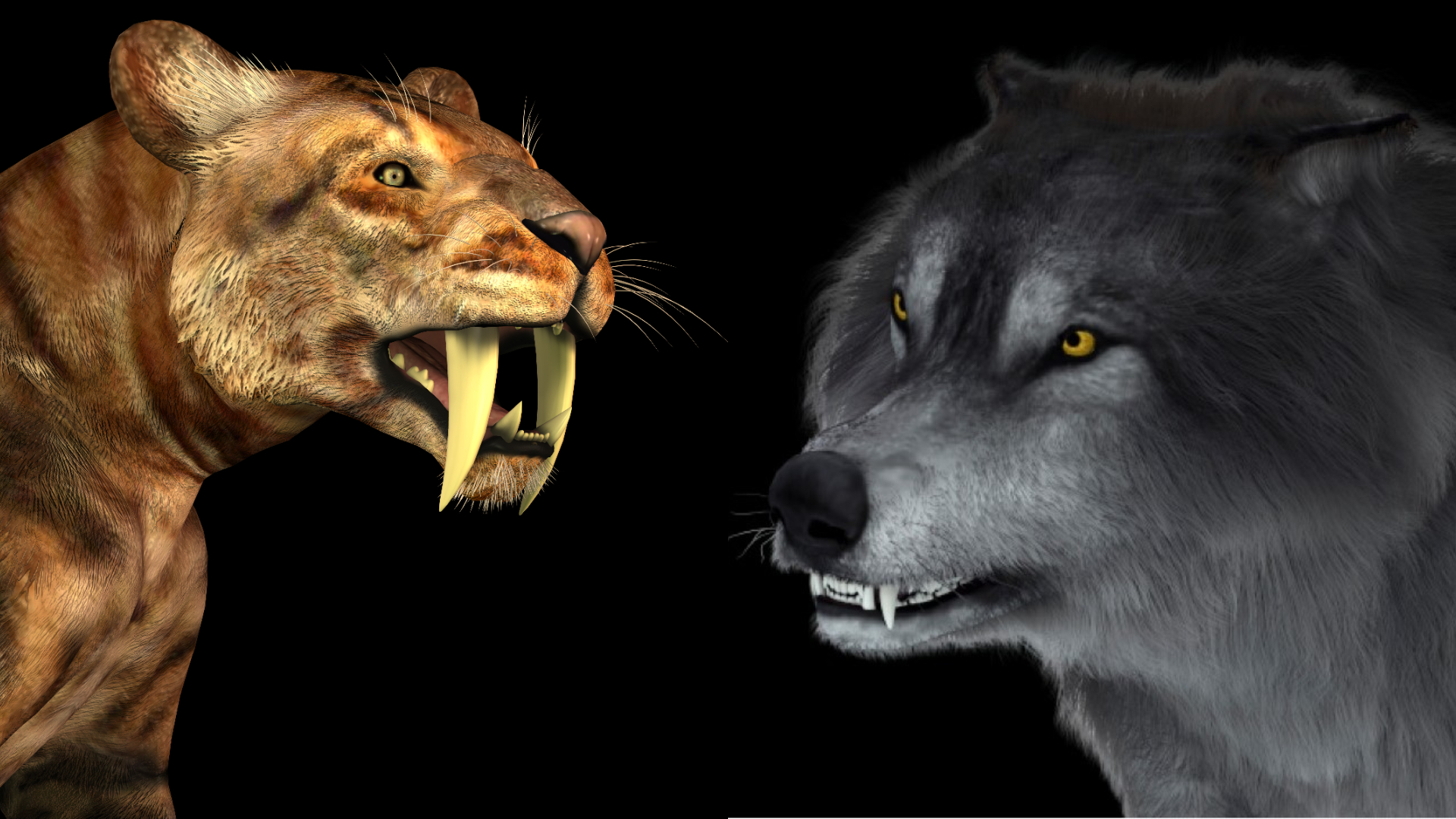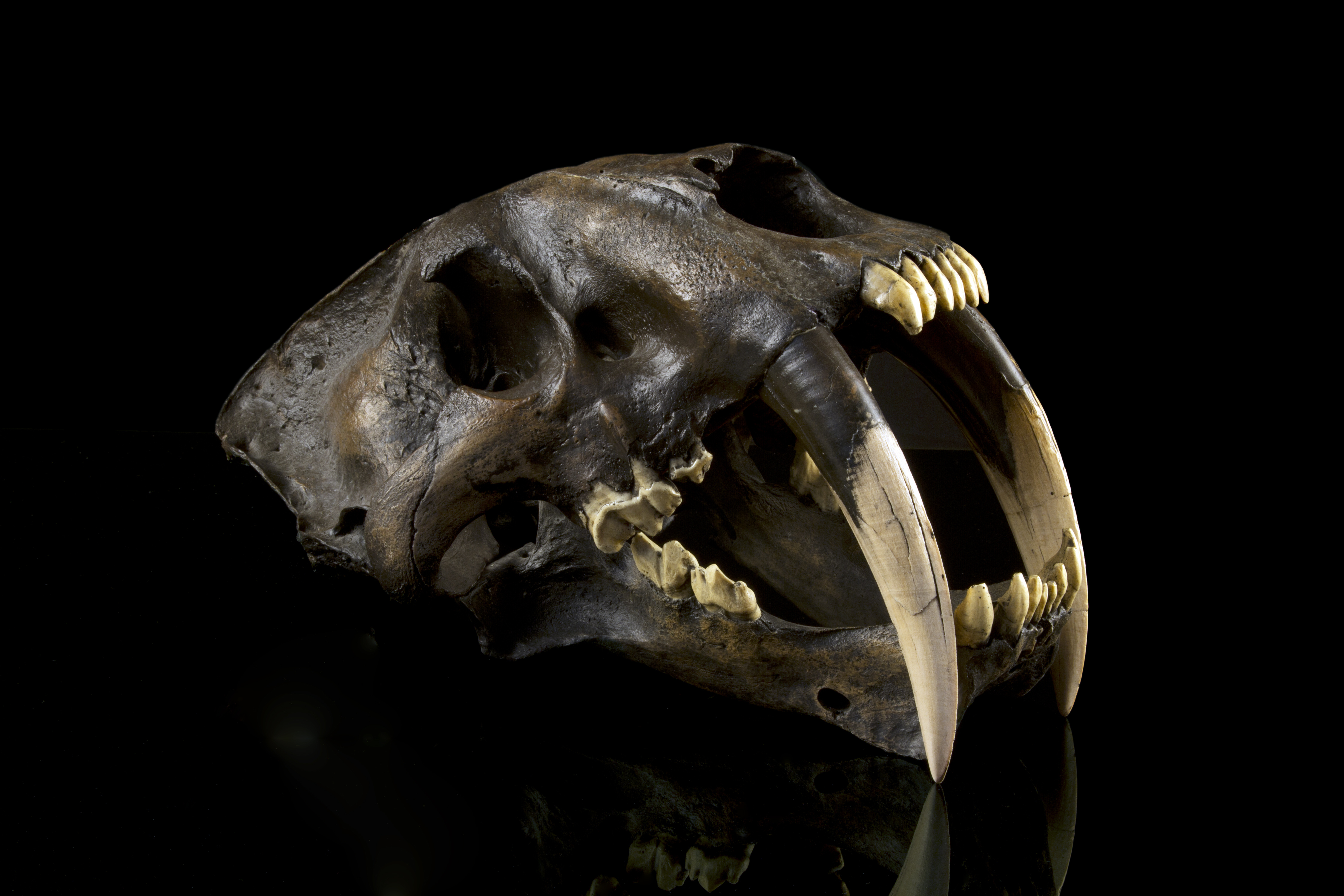Dire wolves and saber-toothed cats may have gotten arthritis as they inbred themselves to extinction
Bones from the two ancient predatory species were found in the La Brea tar pits in what is now West Hollywood and showed signs of bone disease not normally seen in wild animals.

Fearsome saber-toothed cats and dire wolves appear to have suffered from a bone and joint disease toward the end of their existence — a discovery that may indicate these creatures were inbreeding as they went extinct.
Scientists studied the animals' bones from the end of the last ice age during the Pleistocene epoch (about 12,000 years ago) to better understand the ecosystem of North America around the time when these two predators vanished.
"They seem so big and fearsome," but this evidence of disease might indicate that saber-toothed cats and dire wolves "were going through tough times," study author Mairin Balisi, a paleontologist at the Raymond M. Alf Museum of Paleontology in California, told Live Science.
At the tail end of the most recent ice age, the area that is now Los Angeles was home to an ecosystem full of giant mammals that defined the era, like Columbian mammoths (Mammuthus columbi), Jefferson’s ground sloths (Megalonyx jeffersonii) and ancient bison (Bison antiquus). At the top of the food chain were formidable carnivores, including saber-toothed cats (Smilodon fatalis) and dire wolves (Aenocyon dirus).
Some of these animals came to a sticky end by falling into the La Brea tar pits — natural, bubbling pools of asphalt just south of what is now West Hollywood. Their remains were preserved in the pits and later excavated by the paleontologists.
Related: Why did the last ice age end?
The research team examined hundreds of saber-toothed cat and dire wolf bones to look for evidence of a disease called osteochondrosis dissecans (OCD), where defects form in the bones along a joint. The disease can occur in modern dogs and cats — as well as humans — and increase the risk of developing osteoarthritis, a painful joint disease.
Sign up for the Live Science daily newsletter now
Get the world’s most fascinating discoveries delivered straight to your inbox.
Balisi said they weren't expecting to find much evidence of OCD in these carnivores because there isn't much data on bone and joint disease in modern-day wild animals. But 6% of the saber-toothed cats' femurs they studied had visible defects. And in dire wolves, 2.6% of their femurs and 4.5% of their shoulders had defects.

Most defects were small, but some were larger and some showed signs of arthritis, such as bone growths. The researchers published their results Wednesday (July 12) in the journal PLOS One.
Seeing these kinds of diseases in the fossil record is "really interesting, because it gives us this sort of holistic look at how these things evolve, and how they might change over time," Ashley Reynolds, an evolutionary ecologist at the University of Ottawa and the Canadian Museum of Nature, who was not involved in the new research, told Live Science.
Joint and bone health was likely important for these predators' ability to hunt, Balisi said. But while this disease might have complicated hunting, the animals in the study were killed by a tar pit — not because they stopped hunting and starved to death, she said. In addition, while there is some debate on whether saber-toothed cats were social animals, it's possible that these injured animals could have survived longer by sharing food with other individuals.
The researchers also speculate that the species might have been suffering from inbreeding as their population sizes grew smaller and closer to a final extinction — dogs affected by OCD tend to be highly inbred, the team noted. As these ice age giants became geographically isolated from one another, inbreeding rates may have increased, and as inbreeding leads to an increase in inherited disease, OCD may have become more prevalent as their demise edged closer.
However, there is no genetic evidence preserved in the tar pits to test this theory directly. Reynolds said she'd be interested to see if OCD is also an issue in modern wild animals that have experienced inbreeding, such as cheetahs (Acinonyx jubatus).

Ethan Freedman is a science and nature journalist based in New York City, reporting on climate, ecology, the future and the built environment. He went to Tufts University, where he majored in biology and environmental studies, and has a master's degree in science journalism from New York University.










